- About us»
- Net income calculator»
- Population aging»
-
- Least developed regions»
-
- Average wage
- Material need benefits
- Meal allowance
- Counties of Slovakia
- Inflation
- Living and Subsistence Minimum
- Unemployment of Czechia and Slovakia
- NACE Classification
-
- Life expectancy
- Gender differences
- Youth unemployment and NEET
- Minimum wage in EU
- Unemployment rates of different age groups
- Share of salaries on GDP
- Employment rate
- Unemployment rate
- NEET
- Percentage of employees ususally working at nights
- Long term unemployment
-
- Bratislava and surroundings
- Kopanice
- Danube river
- lower Vah river
- middle Vár river
- upper Nitra river
- lower Nitra river
- Mining cities
- Kysuce a Orava
- upper Vah river - Liptov
- Spiš cities
- upper Hron river
- Juhoslovenská kotlina
- Košice fold and Torysa river
- upper Zemplín
- lower Zemplín
- EU regions
- NUTS3 regions of Slovakia
- LAU1 dataset
-
- Projects and activities
- Inclusive growth»
- Good work
- Project SKRS
- Social system – reality and vision
- Library
-
- Education of unemployed
- Young unemployed not taking part in education
- Proposal to change the system of education funding
- News»
- Contact
Brussels-Capital Region – BE1
EU regions: Belgium > Brussels-Capital Region
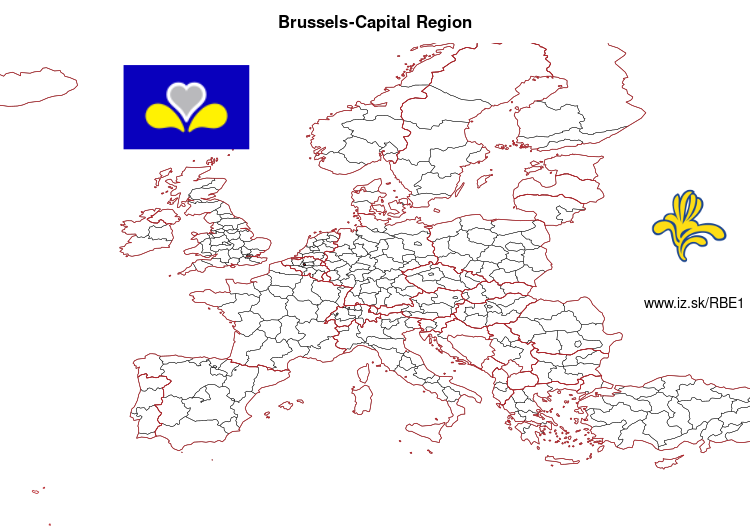
| Indicator | Period | Value |
|---|---|---|
| Life long learning | ||
| life long learning participation | 2024 | 17.5 |
| Part time jobs and flexible employment | ||
| percentage of part time workers | 2024 | 19.35 |
| percentage of part time workers, men | 2024 | 12.89 |
| percentage of part time workers, women | 2024 | 27.21 |
| Gender differences | ||
| gender gap in employment rate | 2024 | 81.66 |
| gender gap in unemployment rate | 2024 | 95 |
| Graduates and young people | ||
| unemployment rate of youth with elementary education | 2024 | 34.4 |
| NEET | 2024 | 9 |
| Gross domestic product | ||
| GDP per capita in PPS of EU average | 2023 | 191 |
| Employment | ||
| employment rate | 2024 | 58.9 |
| Social exclusion | ||
| people at risk of poverty or social exclusion | 2020 | 34.7 |
More on wikipedia wikidata Q240 on OpenStreetMap Brussels-Capital Region slovensky: BE1
Subregions: Brussels-Capital Region, Arrondissement of Brussels-Capital
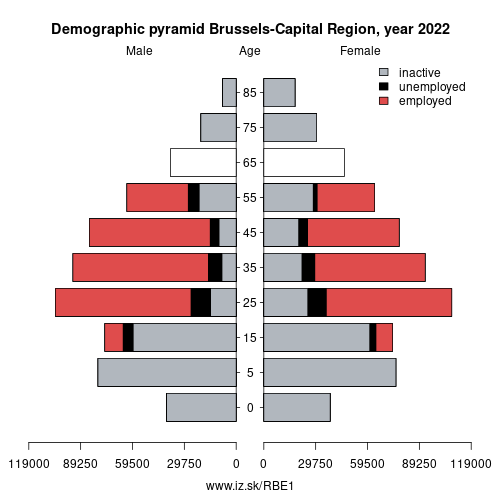
Unemployment
| Indicator | Period | Value |
|---|---|---|
| Unemployment | ||
| unemployment rate | 2024 | 11.9 |
| youth unemployment rate | 2024 | 23.6 |
| Long term unemployment | ||
| long term unemployment | 2024 | 5.8 |
| share of long term unemployed | 2024 | 49.1 |
Demographics
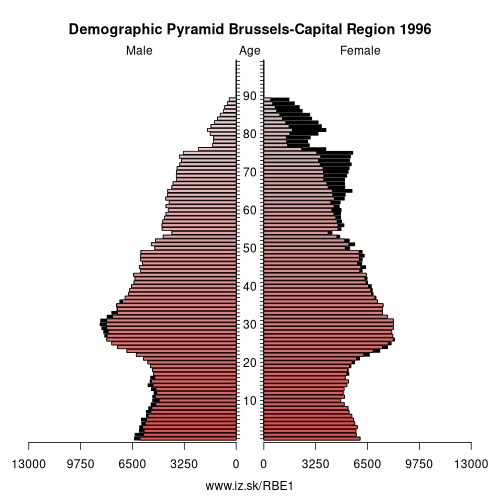
| Indicator | Period | Value |
|---|---|---|
| Demographics | ||
| number of inhabitants | 2024 | 1 264 371 |
| population density | 2023 | 7770.2 |
| old-age dependency ratio | 2024 | 18.7 |
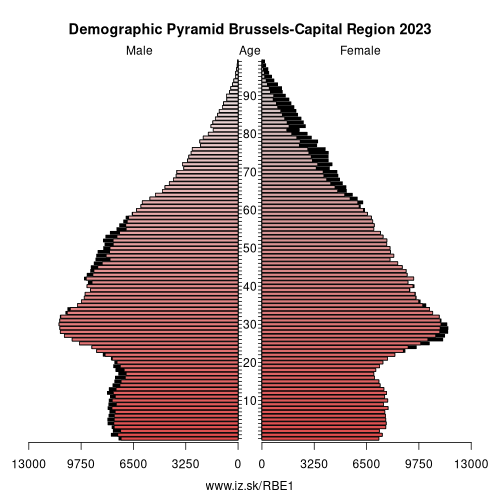
Employment by sectors, Brussels-Capital Region
| NACE r2 | % | NACE r2 | % | ||
|---|---|---|---|---|---|
| B-E | 24.8 | 5% | F | 29.4 | 6% |
| G-I | 109.2 | 21% | J | 28.7 | 6% |
| K | 16.7 | 3% | L | 3 | 1% |
| M_N | 92.2 | 18% | O-Q | 131.9 | 26% |
| R-U | 77.5 | 15% | TOTAL | 514.1 | 100% |
Data for the period year 2024. Source of the data is Eurostat, table [lfst_r_lfe2en2].
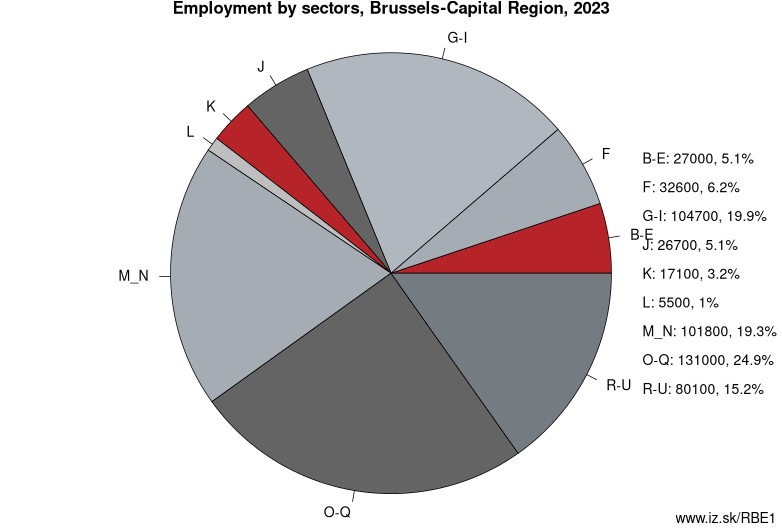
Brussels (French: Bruxelles [bʁysɛl] (listen) or [bʁyksɛl]; Dutch: Brussel [ˈbrʏsəl] (listen)), officially the Brussels-Capital Region (French: Région de Bruxelles-Capitale; Dutch: Brussels Hoofdstedelijk Gewest), is a region of Belgium comprising 19 municipalities, including the City of Brussels, which is the capital of Belgium. The Brussels-Capital Region is located in the central portion of the country and is a part of both the French Community of Belgium and the Flemish Community, but is separate from the Flemish Region (in which it forms an enclave) and the Walloon Region. Brussels is the most densely populated and the richest region in Belgium in terms of GDP per capita. It covers 161 km2 (62 sq mi), a relatively small area compared to the two other regions, and has a population of 1.2 million. The metropolitan area of Brussels counts over 2.1 million people, which makes it the largest in Belgium. It is also part of a large conurbation extending towards Ghent, Antwerp, Leuven and Walloon Brabant, home to over 5 million people.
Brussels grew from a small rural settlement on the river Senne to become an important city-region in Europe. Since the end of the Second World War, it has been a major centre for international politics and the home of numerous international organisations, politicians, diplomats and civil servants. Brussels is the de facto capital of the European Union, as it hosts a number of principal EU institutions, including its administrative-legislative, executive-political, and legislative branches (though the judicial branch is located in Luxembourg, and the European Parliament meets for a minority of the year in Strasbourg) and its name is sometimes used metonymically to describe the EU and its institutions. The secretariat of the Benelux and headquarters of NATO are also located in Brussels. As the economic capital of Belgium and one of the top financial centres of Western Europe with Euronext Brussels, it is classified as an Alpha global city.
Other: Belgium, Brussels-Capital Region, Wallonia, Flemish Region
Neighbours: Flemish Region
Subregions: Brussels-Capital Region, Arrondissement of Brussels-Capital
Suggested citation: Michal Páleník: Europe and its regions in numbers - Brussels-Capital Region – BE1, IZ Bratislava, retrieved from: https://www.iz.sk/PBE1, ISBN: 978-80-970204-9-1, DOI:10.5281/zenodo.10200164

 Share
Share Facebook
Facebook Twitter
Twitter News
News